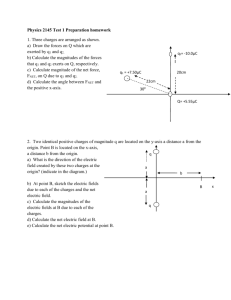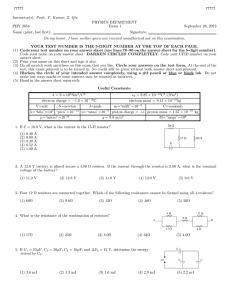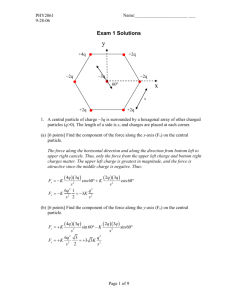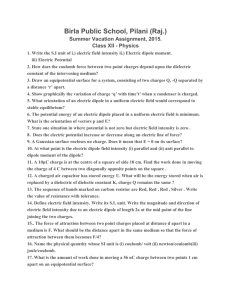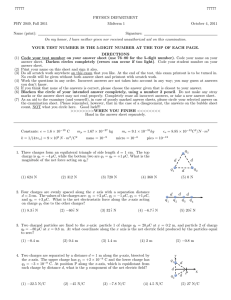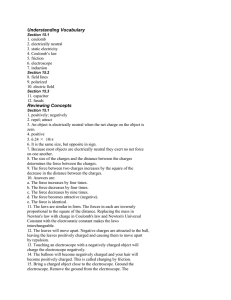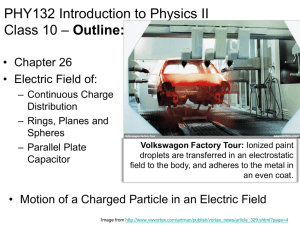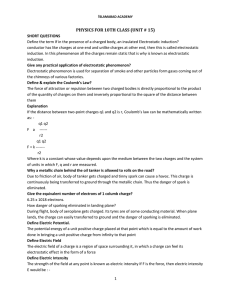The Parallel-Plate Capacitor Electric Potential Energy
advertisement
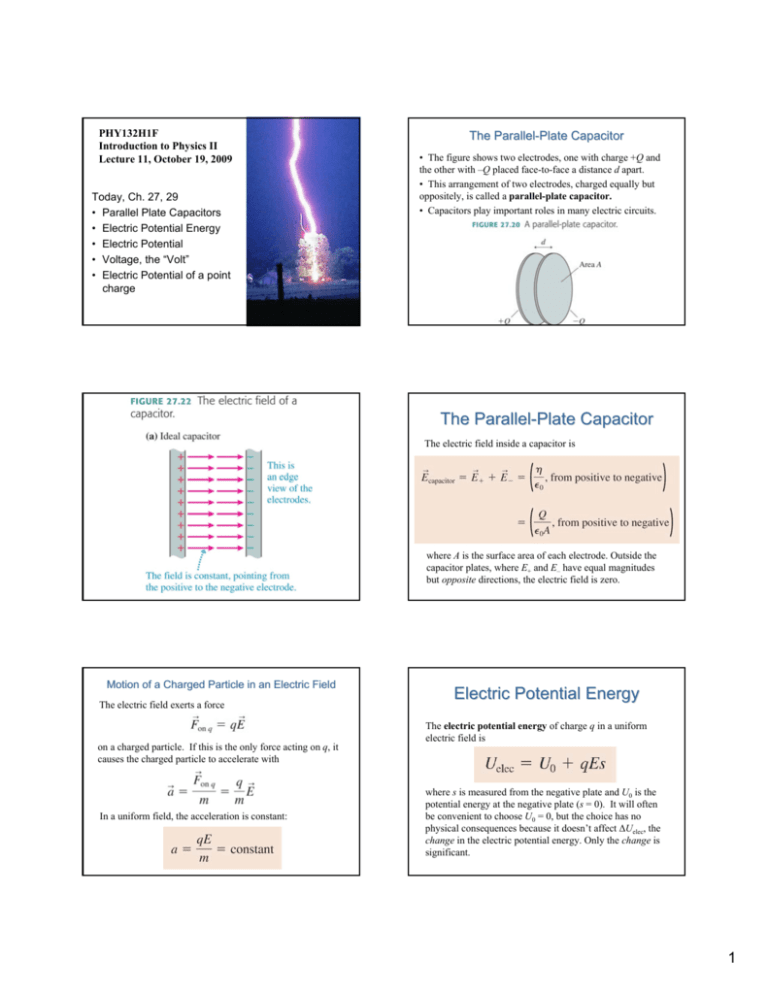
PHY132H1F Introduction to Physics II Lecture 11, October 19, 2009 Today, Ch. 27, 29 • Parallel Plate Capacitors • Electric Potential Energy • Electric Potential • Voltage, the “Volt” • Electric Potential of a point charge The ParallelParallel-Plate Capacitor • The figure shows two electrodes, one with charge +Q and the other with –Q placed face-to-face a distance d apart. • This arrangement of two electrodes, charged equally but oppositely, is called a parallel-plate capacitor. • Capacitors play important roles in many electric circuits. The Parallel-Plate Capacitor The electric field inside a capacitor is where A is the surface area of each electrode. Outside the capacitor plates, where E+ and E– have equal magnitudes but opposite directions, the electric field is zero. Motion of a Charged Particle in an Electric Field The electric field exerts a force on a charged particle. If this is the only force acting on q, it causes the charged particle to accelerate with In a uniform field, the acceleration is constant: Electric Potential Energy The electric potential energy of charge q in a uniform electric field is where s is measured from the negative plate and U0 is the potential energy at the negative plate (s = 0). It will often be convenient to choose U0 = 0, but the choice has no physical consequences because it doesn’t affect ΔUelec, the change in the electric potential energy. Only the change is significant. 1 The Potential Energy of Point Charges Consider two point charges, q1 and q2, separated by a distance r. The electric potential energy is This is explicitly the energy of the system, not the energy of just q1 or q2. Note that the potential energy of two charged particles approaches zero as r → ∞. Rank in order, from largest to smallest, the potential energies Ua to Ud of these four pairs of charges. Each + symbol represents the same amount of charge. A. B. C. D. E. Ua = Ub > Uc = Ud Ub = Ud > Ua = Uc Ua = Uc > Ub = Ud Ud > Uc > Ub > Ua Ud > Ub = Uc > Ua The Electric Potential Inside a Parallel-Plate Capacitor The electric potential inside a parallel-plate capacitor is where s is the distance from the negative electrode. The electric potential, like the electric field, exists at all points inside the capacitor. The electric potential is created by the source charges on the capacitor plates and exists whether or not charge q is inside the capacitor. The positive charge is the end view of a positively charged glass rod. A negatively charged particle moves in a circular arc around the glass rod. Is the work done on the charged particle by the rod’s electric field positive, negative or zero? A. Positive B. Negative C. Zero The Electric Potential We define the electric potential V (or, for brevity, just the potential) as Charge q is used as a probe to determine the electric potential, but the value of V is independent of q. The electric potential, like the electric field, is a property of the source charges. The unit of electric potential is the joule per coulomb, which is called the volt V: A proton is released from rest at point B, where the potential is 0 V. Afterward, the proton A. moves toward A with a steady speed. B. moves toward A with an increasing speed. C. moves toward C with a steady speed. D. moves toward C with an increasing speed. E. remains at rest at B. 2


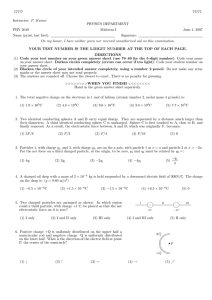
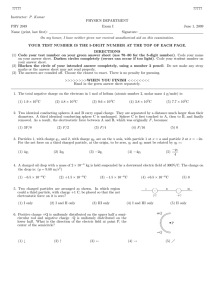



![Sample_hold[1]](http://s2.studylib.net/store/data/005360237_1-66a09447be9ffd6ace4f3f67c2fef5c7-300x300.png)

